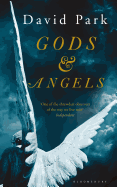
| Publisher: | Bloomsbury | |
| Genre: | Short Stories (single author), Fiction | |
| ISBN: | 9781408866078 | |
| Pub Date: | December 2016 | |
| Price: | $27 |
| Fiction |
by David Park
The 10th book by Irish writer David Park (The Light of Amsterdam) offers profound and observational slice-of-life vignettes with a wryness that speaks to the deep psychological issues that men often face--isolation, alienation, regret, suffering--in modern relationships. The 13 stories display a literary complexity that has become a hallmark of Park's writing.
In "Boxing Day," 17-year-old Robbie visits his manic-depressive mother the day after Christmas and is confronted by painful memories of the circumstances that have led to her despondency. Some of Park's stories have surreal elements of escapism, as in "The Strong Silent Type," which describes a date between a girl and a dummy. "I want to apply words to her hurt," the dummy muses, "like a salve as all things I need to say course uncontrollably though my being, rising and falling on a whelming tide of love, but no matter how hard I try, none can breach the sewn seam of my mouth." A War of the Roses game in "The Bloggers" exhibits to humorous effect how a lack of gender empathy negatively affects modern marriages. Park explores the grief and loneliness of an empty nester in "Skype." It is "Crossing the River," however, that stands as Park's most personal and affective. Dedicated to his mother, it is narrated by the Keeper, who ferries the souls of the newly dead across the river, and of the heartrending conversation he has with his Alzheimer's-suffering mother in their final journey together. --Nancy Powell, freelance writer and technical consultant
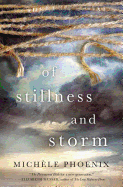
| Publisher: | Thomas Nelson | |
| Genre: | Contemporary Women, Christian, General, Fiction | |
| ISBN: | 9780718086428 | |
| Pub Date: | December 2016 | |
| Price: | $15.99 |
| Fiction |
by Michèle Phoenix
When a woman uproots her family and moves to the other side of the globe to appease her husband's passion for his work, it's difficult. But when the impetus is God, even as a deeply spiritual believer, she's in an untenable predicament. In Of Stillness and Storm, Michèle Phoenix's fourth novel, Lauren Coventry doesn't share Sam's conviction that God has given them a sign to leave Indiana and minister to impoverished children in Nepal. His fervor, however, and her wedding vow of "if God calls us, we'll follow" overshadow her reluctance, even though their young son is devastated at the plan.
Phoenix effectively juxtaposes chapters in Kathmandu and ones from the couples' past--how their love blossomed at a college retreat, their joy in parenting Ryan and the struggle to fund and establish their mission. The primitive conditions and 13-year-old Ryan's increasing withdrawal absorb Lauren's energy during Sam's lengthy trips to remote Nepalese villages. Stoically responsible, she finds solace in sporadic Internet access, eventually connecting with a high school friend and long-ago romantic interest, Aidan. Their rekindled friendship is innocent and validates Lauren's individuality. Trouble simmers, though, and Lauren must draw on her faith and strength to face Sam's radical zeal, Aidan's tragic illness and Ryan's furious, climactic acting out.
Lauren doesn't compromise her lifelong service to others when confronting Sam and demanding what she and Ryan need to survive. Phoenix draws a sympathetic character bolstered by her faith who ultimately uses her given talents to forge her own path. --Cheryl Krocker McKeon, manager, Book Passage, San Francisco
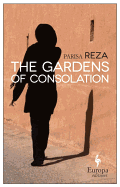
| Publisher: | Europa Editions | |
| Genre: | Family Life, Literary, Political, Fiction | |
| ISBN: | 9781609453503 | |
| Pub Date: | December 2016 | |
| Price: | $16 |
| Fiction |
by Parisa Reza, trans. by Adriana Hunter
The Gardens of Consolation heralds the arrival of yet another prodigiously talented French-Iranian author, Parisa Reza, whose outstanding debut novel, like the works of Marjane Satrapi and Fariba Hachtroudi, voices a side of Iran rarely glimpsed in Western media. Reza's novel tells a sweeping generational saga in less than 300 pages--beginning in the 1920s, in an Iran starting to feel the effects of Reza Shah's modernization campaign, and ending in 1953, with the Western-backed coup that ousted Prime Minister Mohammad Mosaddegh.
Reza relates history like a folk tale, an epic backdrop for the lives and loves of her richly developed characters. The changes occurring in Iran at the time are simultaneously epochal and virtually meaningless to Persians, who are part of an ancient culture. Protagonists Talla and Sardar fall in love, marry, have a son and live an uncomplicated life steeped in quiet dignity: "[Sardar] needed his horizon to be clear so he could see only the essence of life, as it was at the outset, before words existed; having people around, their chatter and bustle, interrupted the view."
Their son, Bahram, on the other hand, is enamored with words. He is as fascinated by political tracts as love poetry and participates in the intellectual ferment of the era. While Reza does not trivialize his efforts, The Gardens of Consolation takes a bittersweet view of Iranian history. As one character puts it: "What would be the point of freedom when enslavement is so tragic, tragedy is so poetic and poetry is so Persian!" --Hank Stephenson, bookseller, Flyleaf Books
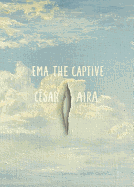
| Publisher: | New Directions | |
| Genre: | Magical Realism, Literary, Fiction, Alternative History | |
| ISBN: | 9780811219105 | |
| Pub Date: | December 2016 | |
| Price: | $14.95 |
| Fiction |
by César Aira, trans. by Chris Andrews
Ema, the Captive, Cesar Aira's second novel (published in Argentina in 1981), defies traditional genre categories. But, then again, so do most of Aira's novels. His The Literary Conference detailed the attempts of a mad scientist to clone novelist Carlos Fuentes in hopes of achieving world domination, while An Episode in the Life of a Landscape Painter served as an exegesis on Alexander von Humboldt's scientific theories.
Ema, the Captive concerns the journey of a woman of indeterminate origins in 19th-century southern Argentina. The story is episodic, told through a series of vignettes: Ema travels with a military caravan to a fort in the wilderness; Ema becomes the concubine of an Indian chieftain; and Ema, at the end, transforms into an unlikely entrepreneur. These moments in Ema's life provide the structure by which Aira explores his themes of time, perception and mystery.
Like fellow Argentine Jorge Luis Borges's writing, Aira's continually shifts and unwinds itself. The literal and the metaphorical blend, and philosophical digressions turn out to be a narrative thrust themselves. If all this seems a bit much--and at times it can be--Aira redeems himself with prose that can stun. On the cry of a pheasant, Aira writes: "Inevitably, it brings to mind the solidity of gold. One wonders how it is possible for the pheasant to remain afloat on the flimsy surface of the grass and not sink into the planet like a stone in water." And this is Aira describing the daily rhythm of the Indian tribe Ema lives with: "They seemed to be living solely to prove that fixed moments do not exist. Nature closed its valves for them and presented a single continuous edge, firm and smooth."
Ema, the Captive challenges the reader on every page. And rewards the reader just as often. --David Martin, freelance writer
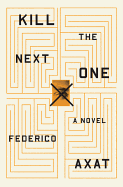
| Publisher: | Mulholland Books | |
| Genre: | Psychological, Thrillers, Fiction | |
| ISBN: | 9780316354219 | |
| Pub Date: | December 2016 | |
| Price: | $26 |
| Starred | Mystery & Thriller |
by Federico Axat, trans. by David Frye
Argentinian author Federico Axat (Benjamin) followed a complex recipe for his first work translated into English: create a compelling mystery, but wrap it in layers of uncertainty. Throw in some violence, a dash of a secret suicide club, a pinch of adultery, a mental hospital and enough repressed memories to ice the whole shebang. Don't forget the side order of demonic opossum. Write some scenes twice, changing them just a hair. Cut into pieces and mix, leaving your protagonist and readers to question their sanity for more than 400 riveting and agonizing pages. The result is a spectacular mind-meld of a psychological thriller, Kill the Next One.
Poor Ted McKay is trying to commit suicide when he's interrupted by an insistent knock at the door. His visitor is a stranger who makes Ted an offer he can't refuse: kill a murderer who went free and another man who is suicidal. In return, someone will kill Ted so he can die a heroic victim rather than by his own hand.
As Ted tries to carry out his mission, the world tilts on its axis. It's unclear what is real, who is telling the truth and how Ted was chosen. As his mind fractures, memories start to leak through, bringing frightening clarity with them. Axat brilliantly creates an environment permeated by doubt and the anxiety it perpetuates. The story is chilling, but Axat has the skill to infuse it with humanity while maintaining the nightmarish atmosphere. Kill the Next One is a recipe baked to perfection. --Lauren O'Brien of Malcolm Avenue Review

| Publisher: | Little, Brown | |
| Genre: | Biography & Autobiography, Direction & Production, General, Entertainment & Performing Arts, Performing Arts, Film & Video | |
| ISBN: | 9780316257442 | |
| Pub Date: | December 2016 | |
| Price: | $32 |
| Biography & Memoir |
by Brian Jay Jones
As a cinematography student at the University of Southern California in the 1970s, George Lucas aspired to make documentaries or serious independent films along the lines of Fellini, Godard, Kurosawa and William Wyler, a cinematographer famous for his inability to relate to actors--a charge that would later be leveled against Lucas. His first student film established him as a wunderkind in this vein: Electronic Labyrinth: THX 1138-4EB won the National Student Film Festival and brought him into contact with other avant-garde filmmakers like Francis Ford Coppola. Lucas's dogged pursuit of independence resulted in two of pop culture's most iconic franchises--Star Wars and Indiana Jones. Yet the rebel who shunned the Hollywood studio system became a victim of his own filmic excesses, growing so enamored with "his way" that he emerged as his own brand of studio mogul.
In a sweeping and engaging biography that should delight Lucas fans and film history buffs alike, Brian Jay Jones (Jim Henson: The Biography) reveals exhaustive details behind the filming of the Star Wars franchise--how the project appeared destined for disaster, with never-ending prop malfunctions, budget overruns and intense script and concept battles with studio executives. He covers Lucas's early influences, his friendship with Steven Spielberg, his love/hate relationship with Coppola and the Modesto roots that shaped his filmography--to which he paid homage in American Graffiti. George Lucas: A Life is the fascinating portrait of a onetime Hollywood outsider and obstinate control freak whose identity is linked deeply to his art, and whose sheer force of will rewrote film history. --Nancy Powell, freelance writer and technical consultant
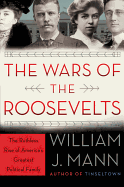
| Publisher: | Harper | |
| Genre: | Biography & Autobiography, General, Presidents & Heads of State, Historical | |
| ISBN: | 9780062383334 | |
| Pub Date: | December 2016 | |
| Price: | $35 |
| Biography & Memoir |
by William J. Mann
Edgar Award-winning biographer and novelist William J. Mann (Tinseltown) acknowledges at the start of this captivating, ambitious and hefty biography that the feuding branches of the Roosevelt dynasty have become well-trod territory for historians. But Mann is a superb historian and researcher, rarely parroting previous tales without investigating their validity. This often leads him to revisionist perspectives on familiar subjects, and The Wars of the Roosevelts certainly gives fans of historical biographies a fresh look at Theodore Roosevelt's relationship with his alcoholic brother, Elliott (father of Eleanor, who later married her cousin Franklin Roosevelt), his three legitimate children (Alice, Ted Jr. and Kermit) and one illegitimate son (Elliott Roosevelt Mann--no relation to the author).
As expected in any biography covering the lives of two United States presidents, there is plenty of political intrigue, backstabbing and jockeying for power. But what makes Mann's nearly 650-page biography so mesmerizing is the personal drama of an expansive political family at war for nearly a century. Mann's fresh revelations come from new interviews with a number of the Roosevelt family descendants (including Elliott Mann's daughter, granddaughter and great-granddaughter). While Mann casts no one as a villain, this family portrait leaves no one unscathed or blameless.
The Wars of the Roosevelts is as meticulously researched as it is beautifully written and authoritatively intimate. It's also as juicy as a beach novel, with revelations of mistresses, gay affairs, numerous suicides, neglect, dysfunction and family grudges held until the grave. In short, it's the kind of history book that encourages new generations to become historians. -- Kevin Howell, independent reviewer and marketing consultant
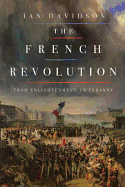
| Publisher: | Pegasus Books | |
| Genre: | Europe, Revolutionary, History, France | |
| ISBN: | 9781681772509 | |
| Pub Date: | December 2016 | |
| Price: | $28.95 |
| Starred | History |
by Ian Davidson
In The French Revolution: From Enlightenment to Tyranny, journalist Ian Davidson (Voltaire in Exile) uses the skills he developed as a foreign affairs correspondent for the Financial Times to consider one of the most complicated and influential events of the 18th century. The result is an even-handed, step-by-step account of key moments of the French Revolution, from August 2, 1788, when Louis XVI called a meeting of the États généraux in the hopes of getting financial help, through the execution of Maximilien Robespierre on July 28, 1794.
Davidson assumes that his reader is familiar with the catchwords and names associated with the French Revolution, but not with the details of its development. He begins with a careful description of the economic and social conditions in France in the years before the war. He identifies possible points of confusion for a modern reader--the Parlement, for example, was a law court--and gives brief biographies for each of the players, bringing even the most familiar names into clearer focus. Most importantly, he makes it clear that the Revolution began as a peaceful attempt at social change, with leaders who were dedicated to the rule of law, and that it remained largely peaceful for three years.
Davidson's The French Revolution is not a scholar's account of the French Revolution, and makes no claim to be. It is instead a serious work of popular history, challenging enough to intrigue those already familiar with the revolution and accessible enough to engage those who are not. --Pamela Toler, blogging at History in the Margins
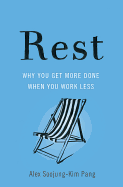
| Publisher: | Basic Books | |
| Genre: | Self-Help, Psychology, Work-Related Health, Creative Ability, Health & Fitness, Creativity | |
| ISBN: | 9780465074877 | |
| Pub Date: | December 2016 | |
| Price: | $27.50 |
| Psychology & Self-Help |
by Alex Soojung-Kim Pang
More is not always more. Though many people view regular sleep, meals and leisure time as wimpy stuff, working long hours every day, checking e-mail at 2 a.m. and charging hard every moment you can stay conscious makes you much less likely to produce good work. Rest combines current neuroscience and psychology with examples from the lives of great scientists and artists to argue that rest is not a luxury, nor is it the opposite of work. "Restorative daytime naps, insight-generating long walks, vigorous exercise, and lengthy vacations aren't unproductive interruptions; they help creative people do their work."
Writer, scholar and business consultant Alex Soojung-Kim Pang (The Distraction Addiction) offers an enjoyable, well-organized and persuasive consideration of the relationship of work and rest. He approaches this through four main insights: that work and rest are partners, not opposites; that rest is active; that it is a skill; and that it stimulates and sustains creativity. These insights are developed in chapters focused on various forms of rest--such as walks, naps, vacations, deep play and vigorous exercise--and on schedule structuring through routines, limited hours and deliberate stops. He describes the philosophical ideas and history behind current ideas about creative work, and argues that a focus on long hours and constant attention to jobs leads people to resolve superficial problems quickly, rather than develop more difficult and worthwhile projects. This book has something to offer anyone looking for new ways to structure their daily lives. --Sara Catterall
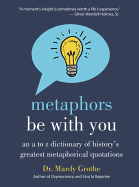
| Publisher: | Harper | |
| Genre: | Directories, Quotations, Reference | |
| ISBN: | 9780062445339 | |
| Pub Date: | December 2016 | |
| Price: | $19.99 |
| Reference & Writing |
by Mardy Grothe
As up-to-date as the pun of the title, Mardy Grothe's collection of quotations is a handy reference as well as an entertaining diversion. Metaphors Be with You is tidily organized into 10 metaphors in 250 categories--pick a topic!--and includes QR codes to integrate the book digitally with the author's online database of more than 100,000 metaphorical quotations, which he launched in 2014.
Grothe's enthusiasm for metaphors is infectious. A retired psychologist and author of six language books (including Oxymoronica), his collection began 50 years ago, when he was moved by Thoreau's "different drummer" passage in Walden. In a concise introductory section, he notes that metaphors demonstrate the evolution of language: "Time is money" (Ben Franklin) morphed into "He spent a ton of time." He defines the metaphor's cousins--simile ("less assertive") and analogy ("more cerebral")--and shares his history as a metaphor collector turned curator, as well as the span of his collection's origins: from ancient Greece and Rome to Downton Abbey.
In each of the categories, Ability through Zeal, Grothe has narrowed the metaphors to the 10 best. If readers don't find their nominee for a stellar quote, he suggests they refer to his website and the hundreds of entries on each topic, comparing the website and book with having oceanfront property with a swimming pool in the back.
Dip into these 2,500 nuggets from Mark Twain, Bill Gates, Delia Ephron and many more to bolster a speech or just to savor the pithy prose. --Cheryl Krocker McKeon, manager, Book Passage, San Francisco
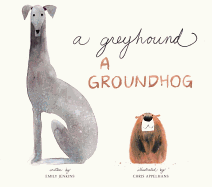
| Publisher: | Schwartz & Wade/Random House | |
| Genre: | Concepts, Animals, Words, Dogs, Size & Shape, Juvenile Fiction | |
| ISBN: | 9780553498059 | |
| Pub Date: | January 2017 | |
| Price: | $17.99 |
| Starred | Children's & Young Adult |
by Emily Jenkins, illust. by Chris Appelhans
"A groundhog, a greyhound,/ a grey little/ round hound./ A greyhound, a groundhog,/ a found little roundhog."
Tongue-twisting wordplay abounds in this charming read-aloud romp by Emily Jenkins (Toys Go Out; Toy Dance Party; Toys Come Home; Toys Meet Snow) and Chris Appelhans (illustrator of Jenny Offill's Sparky!; Flight series). Here, Jenkins pays tribute to a 1954 Caldecott Honor book illustrated by Maurice Sendak. She writes in her dedication: "A Greyhound, a Groundhog owes a debt of inspiration and rhythm to A Very Special House, by legendary children's author Ruth Krauss."
After the cheerful dog enthusiastically greets the initially leery "roundhog," the dynamic duo circles around each other playfully: "Around, round hound./ Around, groundhog!" As the new friends whirl and twirl, the artwork does too, dizzyingly. The type curves to heighten the whirlpool effect: "Around and/ around and around/ and around./ The ground and a hog/ and some grey and a dog." As the kinetic illustrations of groundhog and greyhound blur, the words start to blend as well: "grey dog," "greyhog," "a hog little hound dog." The mad revelry stops only when they are both distracted by butterflies, then a bog, then, naturally, a log. In the end, the boisterous buddies collapse, panting and exhausted.
Preschoolers will delight in the sound of the words that rhyme and repeat and mirror and mix, qualities sure to render it a bedtime favorite. Appelhans's watercolor illustrations are both adorable and artful, and the fluid style beautifully complements Jenkins's story of unlikely friendship, joyful rambunctiousness and wordplay. A round, a mound, the sound of applause! --Karin Snelson, children's & YA editor, Shelf Awareness
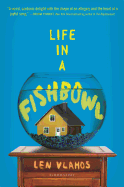
| Publisher: | Bloomsbury | |
| Genre: | Black Comedy, YOUNG ADULT FICTION, Death & Dying, Humorous, Parents, Family, Social Themes | |
| ISBN: | 9781681190358 | |
| Pub Date: | January 2017 | |
| Price: | $17.99 |
| Children's & Young Adult |
by Len Vlahos
Jared Stone, a 45-year-old father diagnosed with a terminal brain tumor, is worried about leaving his family penniless, so he decides to auction off "not his things, but his actual life" on eBay. His auction listing reads: "You may do with him as you please--slavery, murder, torture, or just pleasant conversation." The reserve price is set at a cool million, and he has some takers.
Len Vlahos's (The Scar Boys; Scar Girl) third-person narrative has a deadpan, reportorial style, reflecting the perspectives of multiple characters (including the giddy, memory-eating brain tumor itself) with a curiously absorbing detachment. The eBay bidders interested in the "Human Life for Sale" are Hazel Huck, a sympathetic gamer; Ethan Overbee, "utterly devoid of empathy," who smells a hot reality TV series; Sister Benedict Joan, who disapproves of Jared's public views on euthanasia and sees an opportunity; and the predatory Sherman Kingsborough, a "stinking rich" young man who follows every dark indulgence with a "noble gesture."
It's Ethan who eventually "wins" by getting his reality TV show, and soon the Family Stone--including Jared's wife and two teenage daughters--is living in "a cruel kind of fishbowl, and all they could do was pucker and swim." While centering on the emotional struggles and remarkable fortitude of introverted 15-year-old daughter Jackie, Life in a Fishbowl is a riveting, witty, skillfully crafted exploration of terminal illness, euthanasia, memory, love, grief, greed, obsession, the exploitative, deceptive nature of "reality" TV and the power of an engaged global community to right wrongs. --Karin Snelson, children's & YA editor, Shelf Awareness
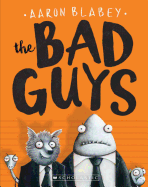
| Publisher: | Scholastic | |
| Genre: | Humorous Stories, Animals, General, Juvenile Fiction, Action & Adventure | |
| ISBN: | 9780545912402 | |
| Pub Date: | December 2016 | |
| Price: | $5.99 |
| Children's & Young Adult |
by Aaron Blabey
Perhaps "bad guys"--be they wolf, snake, piranha or shark--are not all that bad. Maybe they're just misunderstood? In The Bad Guys, Mr. Wolf tries to get his much-maligned buddies to be good guys... with mixed results.
Mr. Wolf is a natural at motivational speaking: "Aren't you tired of being the VILLAIN?" he asks his fanged friends. "Aren't you tired of the SCREAMS?" Mr. Piranha says, "Not particularly," and Mr. Snake says, "Not in the slightest." Mr. Wolf is undeterred by their apathy and, determined to prove their capacity as heroes, takes them on an educational field trip in his car (correction: "a fuel-injected, 200-HORSEPOWER, rock 'n' rollin' chariot of flaming COOLNESS" that runs on "undiluted panther pee.") They come upon a cat up a tree. "So what are we going to do?" Mr. Wolf asks professorially. "Rescue the cat," says his peanut gallery in unison, resignedly. "And what are we NOT going to do?" asks Mr. Wolf. "Eat the cat," they answer lifelessly. The understandably freaked-out cat is unharmed during their absurd and ineffective rescue attempts, but Mr. Snake eats Mr. Piranha. Mr. Wolf spins Mr. Snake around by the tail until Mr. Piranha is launched from Mr. Snake's body and, conveniently, knocks the cat out of the tree. ("I should have stayed in Bolivia," quips Mr. Piranha.)
Australian author-illustrator Aaron Blabey's (Pig the Pug) short, snappy story is a full-on hoot for the Captain Underpants crowd, told in cartoon panels, funny black-and-white illustrations and very few words. (Next up in the Bad Guys series: Mission Unpluckable.) --Karin Snelson, children's & YA editor, Shelf Awareness